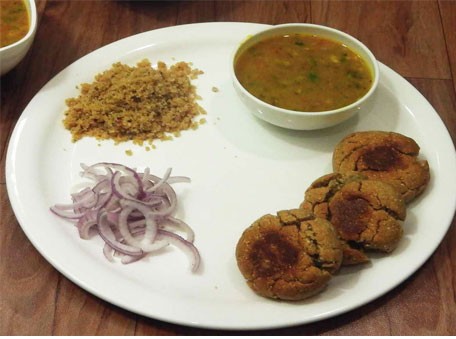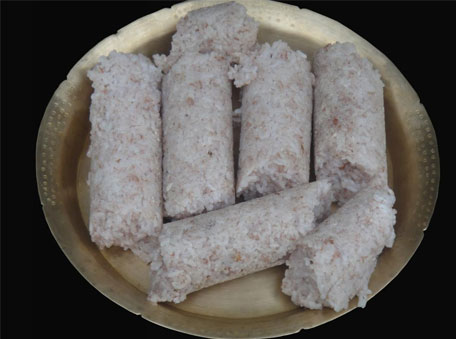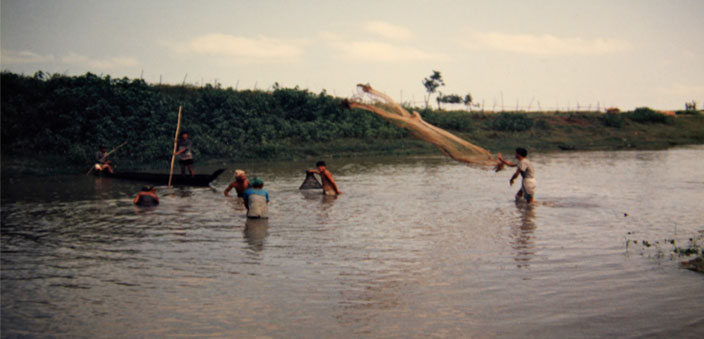Let me start with a confession – I’m not exactly a ‘foodie’ in the typical sense of the term. I mean, food does not really play a central role in my existence – am not really passionate about it. But I’m passionate about my travel and consider myself more of a traveler than a tourist. And you can’t have a complete experience as a traveler by ignoring the local culinary culture…Hence, by default, food started playing a more important role in my life than I had originally designated it in my psyche.
When I look back at my adventures as a traveler, I find that many of those had food associated with it. I still remember that night in the island of Bali, vividly, although it took place in 2003. The night when I decided to accept an invitation for dinner at the fishing village near our resort. Actually, it was on the previous night, while taking a midnight stroll that I got talking to one of the security guards of the resort, and he invited me to taste the roasted fish in his village the next evening, against the payment of some nominal Indonesian rupiah. And in my sojourn, I was joined by my brother, brother in law and niece. Till date, I remember the disappointment on the face of the villagers when we called it quits after eating a couple of freshly caught smoked fish each. They were disappointed because they felt we ate far too less for the amount we paid, and to top it, being teetotalers, couldn’t accept their offer of local liquor…But as I close my eyes, I can still smell the aroma of the freshly smoked fish with the roaring sea as the backdrop… (by the way, I got a call from my niece Praptee while I was in the middle of penning down this piece…when I mentioned this incident, she remembers vividly how we ventured into the fishing village taking the short-cut of climbing over the resort wall…and how we were served the fish, roasted in banana leaves…and to think that she was all of eight years old at that time!)
Of bharta baingan and dal bati choorma!
Or for that matter, let me visit the road trip through Gujarat that I undertook with my wife Pallavi and another couple of friends Cyrus and Nalini, in 2010. After starting from Ahmedaabad in the morning, it was late afternoon by the time we approached the Gir national park. To say that we were starving will be an understatement here! So we stopped by a roadside makeshift shack, which didn’t even have proper side walls – forget table/chairs – more due to lack of choice rather than because of it. But what an experience this ‘lack of choice’ provided us with… Sitting in the charpai, we relished the bharta cooked from the freshly plucked green brinjal, along with the hot bajra roti on tiny charcoal ‘chulha’ (stove) and washed it all down with a rich glass of chaas, and it tasted divine not just because we were starving.

The food does taste different depending on the ambience and circumstances – no point arguing this fact. I’m sure all of us who have relished that hot bowl of Maggie noodles (before the recent ban!) at the roadside stall on a hill station will agree that it tasted so much better there than at home! However, the best example of this universal truth I experienced on our trek to the Valley of Flowers and Hemkund Sahib in Uttarakhand towards the end of August 2001. After hours of the tiring climb of 4,632 meters (15,197 feet) in freezing temperature, when we reached the Gurudwara at Hemkund Sahib on a chilly afternoon, the water of the lake next to it was starting to freeze. As we took our seats inside the Gurudwara, the volunteers served us piping hot tea in a steel glass (almost a foot tall!) and piping hot khichdi…To start describing how these two regular items tasted at that moment – well, I plead guilty of not even trying!
The culinary Northeast

Majuli tales
On another occasion, around the year 2000, while making a documentary on one of the largest inhabited river islands of the world, Majuli in the River Brahmaputra (Assam), we encountered this interesting fish pickle namsing – made from dried fish by the local Mishing tribe. What makes this pickle (which has a quite a strong smell by the way!) stand out is its strong anti-malarial properties – much needed in this river delta, infested with mosquitoes! Similarly, the tribe has their traditional drink called apong, made out of fermented rice. Consumed in the right quantity, apong is supposed to have some medicinal qualities – mainly to fight the ‘beriberi disease’, which is fairly common in that area.
Majuli occupies a special place in my heart and that is not just because of the beauty of the river island or the warmth of the people I met there. In 2009, when I returned to Majuli for the shoot of my Assamese/Hindi bi-lingual feature film Ekhon nedekha nadir xipare/ As the River Flows, nothing much had changed there…as if the island was frozen in time. During the shoot, we had hired a caterer from Mumbai to take care of the food of the unit, with special emphasis on meeting the tastes of the actors from Mumbai. However, I was happy to order food from the resort that we were staying at – some simple village food consisting of brown rice, vegetables grown in the resort owner’s backyard (he and most villagers refuse to buy vegetables from the market as they could be sprayed with chemicals, and so prefer to grow their own food). Of course, every plate would also come accompanied with a preparation of the indispensable fresh fish caught in the river. Once my film’s lead actor Sanjay Suri saw my plate, he refused to touch anything prepared by the ‘Mumbai caterer’, for the rest of the schedule!
Today, when I read about the Centre’s initiative of declaring some northeastern state as ‘organic’, it doesn’t surprise me much. After all, most of Northeast regions have always grown organic – most dishes are prepared with little or no oil, either boiled, roasted or smoked with fresh spice and herbs that grow in abundance in the area – much, much before terms like ‘organic’ had become fashionable!


 [/column]
[/column]